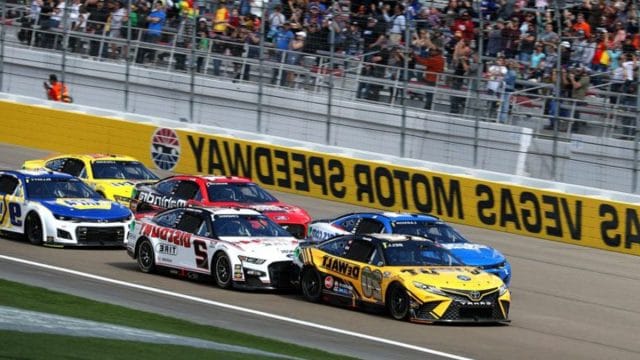On NASCAR 76th anniversary, the evocative scents of burning rubber, the roar of engines hitting 180 mph, and the collective cheers echoing through the crowds create an immersive experience cherished by fans. These sensations, often abstract to many, are the fundamental essence of stock car racing, shaping its legacy from its inception to the present day.
Spanning from the serene beaches of Daytona to the bustling streets of Chicago and navigating the rugged terrains across America to the prestigious 24 Hours of Le Mans at Circuit de la Sarthe, NASCAR’s journey has been arduous and extensive. Yet, before delving into its evolution and current status, understanding the roots of this sport on its 76th Foundation Day is pivotal.
Initially a method to elude authorities during the Prohibition era’s moonshining days, stock car racing gradually metamorphosed into a distinctive spectacle, a showcase for drivers’ racing prowess. As makeshift racecourses emerged to cater to burgeoning audiences, the refinement of the spectacle hinged on exhibiting the drivers’ skill.
In a pivotal moment on December 14, 1947, Bill France Sr. orchestrated a momentous meeting at Streamline Hotel in Daytona. This gathering, attended by 35 individuals including drivers, officials, and promoters, culminated in the blueprint for establishing a sanctioning body for stock car racingthe National Association for Stock Car Auto Racing, known as NASCAR. A mere 69 days later, NASCAR was officially born.

France Sr. articulated during the 1947 Streamline Hotel announcement, envisioning the potential of stock car racing: “Stock car racing has significant potential for Sunday shows…It can be nationally recognized, akin to big car racing like Indianapolis, with a National Point Standing.”
Since its inception, NASCAR has experienced remarkable growth and evolution. Prioritizing driver safety, introducing Next-Gen cars to streamline team costs while maintaining the sport’s allure, and the recent inclusion of a street course in the race schedule mark significant milestones. This move, set to return in the 2024 season, not only attracted record viewership but also bolstered tourism.
Building upon the momentum of the 75th anniversary celebrations, NASCAR President Steve Phelps is optimistic about the future. Phelps emphasized, “Were going to be bold and innovative…consider our move to the LA Coliseum for an exhibition race. The Busch Light Clash at the Coliseum. That was unexpected, but essential. Well continue that trend.”
With forthcoming changes aimed at enhancing the sport’s appeal and dynamism for its fanbase, NASCAR remains on a path charted towards sustained greatness. The journey ahead promises to uphold its legacy while embracing the evolution necessary for perpetual relevance.
Also read: NASCAR 75th Anniversary Awards: Honoring Champions
Our Reader’s Queries
Is this the 75th anniversary of NASCAR?
In 2023, NASCAR will celebrate its 75th anniversary, marking a significant milestone for the stock car racing industry. This occasion provides an opportunity to reflect on the sport’s rich heritage and how it has evolved since its inception in 1948. Despite its roots, NASCAR is now rapidly advancing into the future, with innovations that would have been unimaginable to its founders. It’s an exciting time for the sport, as it continues to push boundaries and captivate audiences worldwide.
Why doesn t NASCAR run 43 cars anymore?
To combat the issue of start and park entries, NASCAR made a move in 2013 to decrease the size of the Nationwide Series starting grid. Previously, the grid consisted of 43 cars, which was the same size as a Cup Series field. However, the new regulations reduced the number to 40 cars. This change was implemented to encourage more competitive racing and discourage teams from entering races with no intention of finishing.
When did Dodge quit NASCAR?
After a successful 12-year stint in NASCAR, the car maker has announced its withdrawal from the competition at the end of the 2012 season. The team has achieved an impressive 55 victories with 11 different drivers in the Sprint Cup Series. This decision marks the end of an era for the car maker in the world of NASCAR.
Who drove 75 in NASCAR?
Morgan Shepherd took the wheel of #75 on various occasions, starting in 1986 when he drove the RahMoc car part-time. In 1988, Shepherd stepped in for Neil Bonnett in two races due to Bonnett’s health. Following Bonnett’s departure from RahMoc in 1989, Shepherd was appointed as the new, full-time driver.
